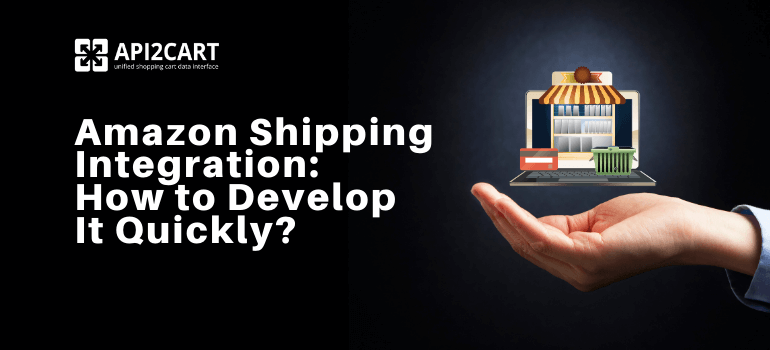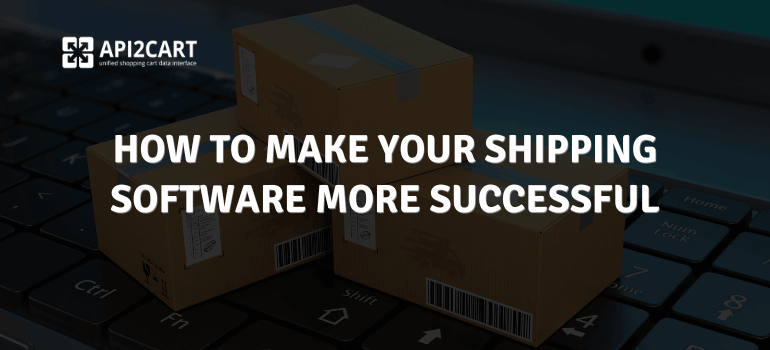As the eCommerce market is on the rise, the number of e-retailers and online orders are increasing too. It means that the online sellers who want to be successful and effective need to provide their clients with the ability to automatically track their orders and ensure there is no delay in receiving orders. For that purpose, e-retailers are searching for shipping solutions that can cover their business needs and have the integration with the shopping carts they use. So, it becomes imperative to get your system integrated with multiple shopping platforms if you are a shipping software provider.
The shipping process is an integral part of any eCommerce business owner’s life because it represents the final phase of the buying stage and by far one of the most important. Flawless shipping with no issues can transform a one-time buyer into a loyal customer who is willing to spread the news. On the contrary, problems with the shipping can make a customer never want to deal with a seller ever again.
In order to enable your customers, which are e-store owners, to provide superior shipping service to their end clients, you need to ensure that your software is integrated with the APIs on the eCommerce platforms used by your clients.
In this article, we will explore how to develop the shopping platform integration fast and how you can easily provide your customers with the functionality related to adding tracking info to e-stores’ orders.
Why Do You Need the Integration with Shopping Platforms?
At this point, you might be wondering why you would need to perform an API integration with multiple shopping platforms, such as Magento, Shopify, PrestaShop or WooCommerce. The fact of the matter is that such integrations offer your business a plethora of benefits.
First of all, you need to integrate your shipping management software with shopping platforms to enlarge your customer pool. As the eCommerce industry is expected to skyrocket in the years following the COVID-19 pandemic, your customer pool is definitely on the rise. Secondly, integration allows you to provide superior services to your thousands of your existing and prospective clients, thus establishing yourself as a trustworthy shipping software provider in your niche.
Another reason to integrate your business with the leading eCommerce platforms out there is that this allows you to gain access to a plethora of e-stores’ actionable data. You can thus work with products, orders, customers, categories, shipping info, and a whole lot more info.
Finally, a successful integration between your business and the platforms used by your customers allows you to increase your profits long-term and improve the functionality of your software. The integration enables you to discover new features for your service and provide better, more user-friendly services to your target niche.
How to Develop a Reliable API Integration Between Your Shipping Software and Shopping Platforms?
At this point, you need to know that without the shopping platform integration, you won’t be able to import orders, update tracking info, create shipping labels and automate the other shipping tasks. The efficiency of your shipping software depends entirely on your capability to automate retail operations, which is directly dependent on the strength of your connection to the APIs of the various shopping platforms.
When it comes to developing an API integration between your shipping software and shopping platforms, you usually have two ways to do that:
- Perform the integration in-house: this is a tedious process that involves hiring experienced developers and spending a minimum of 4 to 12 weeks on the integration with each platform. Additionally, this involves substantial maintenance costs which can amount to tens of thousands of dollars throughout a couple of years.
- Leverage the benefits offered by API2Cart: this is a simple solution that allows you to integrate your software with over 40 eCommerce platforms at once via a unified API.
The second option is much cheaper, takes less time to complete, and is more reliable in the long run. API2Cart’s team of developers works continually to ensure each connection works flawlessly. Using API2Cart API methods, all the shipping management software owners can easily provide their functionality to e-retailers correctly, including the feature related to adding tracking info to the e-stores’ orders.
How to Automatically Add Tracking Info to e-Stores' Orders Using API2Cart?
To better understand how API2Cart works, it’s time to get practical. In short, the solution has a great variety of API methods that allow your shipping management software to retrieve and manage the data from e-stores according to your clients’ needs. Let’s discover what API methods you need to use to provide the feature connected with adding tracking info to e-stores’ orders:
- order.shipment.add: this method allows you to easily add any shipment associated with an order placed on one of your customers’ e-stores. This method is supported by all major shopping platforms and has the following request example:
- order.shipment.tracking.add: this method allows you to automatically add tracking number and tracking url to shipments.The request example of this method looks like this:
https://api.api2cart.com/v1.0/order.shipment.add.json?api_key=e3d14cb857bb7c271f26c1fbe2b00470 &store_key=cfce78a77cc4r46ab02ca75aee5d4398 &order_id=25 &store_id=1 &warehouse_id=1 &shipment_provider=UPS &send_notifications=True &adjust_stock=true &enable_cache=true &tracking_link=http://example.com?someParam=value &items[0][order_product_id]=12 &items[0][quantity]=5 &tracking_numbers[]=1А6745 &tracking_numbers[95]=2В2345
https://api.api2cart.com/v1.0/order.shipment.tracking.add.json?api_key=e3d14cb857bb7c271f26c1fbe2b00470 &store_key=cfce78a77cc4r46ab02ca75aee5d4398 &store_id=1 &order_id=25 &shipment_id=200000002 &carrier_id=USPS &tracking_provider=Custom tracker &tracking_number=1А6745 &tracking_link=http://example.com?someParam=value &send_notifications=True
More details about these and the other supported API methods you can find in API2Cart API Documentation.
Conclusion
When it comes to the actual integration method, we strongly suggest you go with API2Cart.
Using API2Cart, you can dramatically improve your functionality in a shorter period, while saving money and reducing overhead costs. Additionally, you can quickly integrate your shipping management system with over 40 shopping platforms at one go.
Let the experts from API2Cart grow your shipping management software business while you’re focused on providing superior services to your clients and extending your tool’s functionalities. Contact us now, and one of our professional managers will get back to you with more details. Plus try a 30-day free trial period of using the service now.



